How Do You Know Which Lewis Structure Achieves the Best Formal Charge Arrangement
10.four: Writing Lewis Structures
- Page ID
- 24240
Learning Objectives
- To utilize Lewis dot symbols to explain the stoichiometry of a chemical compound
Using Lewis Dot Symbols to Draw Covalent Bonding
The valence electron configurations of the constituent atoms of a covalent compound are of import factors in determining its construction, stoichiometry, and properties. For example, chlorine, with 7 valence electrons, is i electron short of an octet. If two chlorine atoms share their unpaired electrons past making a covalent bond and forming Cl2, they can each complete their valence shell:
![]()
Each chlorine atom now has an octet. The electron pair being shared past the atoms is called a bonding pair; the other iii pairs of electrons on each chlorine atom are called lone pairs. Lonely pairs are not involved in covalent bonding. If both electrons in a covalent bond come from the same atom, the bond is chosen a coordinate covalent bail. Examples of this type of bonding are presented in Department 8.6 when nosotros discuss atoms with less than an octet of electrons.
We can illustrate the germination of a water molecule from two hydrogen atoms and an oxygen atom using Lewis dot symbols:
![]()
The construction on the right is the Lewis electron construction, or Lewis construction, for H2O. With two bonding pairs and two lone pairs, the oxygen cantlet has at present completed its octet. Moreover, by sharing a bonding pair with oxygen, each hydrogen atom now has a full valence beat out of ii electrons. Chemists usually indicate a bonding pair by a single line, every bit shown here for our two examples:
![]()
The following procedure can be used to construct Lewis electron structures for more complex molecules and ions:
- Arrange the atoms to testify specific connections. When at that place is a fundamental atom, it is unremarkably the least electronegative chemical element in the chemical compound. Chemists unremarkably listing this central atom beginning in the chemic formula (equally in CClfour and COiii 2 −, which both accept C as the central atom), which is another clue to the compound's structure. Hydrogen and the halogens are nearly always continued to only one other atom, and then they are usually terminal rather than central.
- Decide the total number of valence electrons in the molecule or ion. Add together the valence electrons from each atom. (Think that the number of valence electrons is indicated past the position of the element in the periodic table.) If the species is a polyatomic ion, think to add together or subtract the number of electrons necessary to requite the total charge on the ion. For COthree 2 −, for instance, we add two electrons to the total because of the −2 charge.
- Place a bonding pair of electrons between each pair of adjacent atoms to requite a single bond. In H2O, for example, there is a bonding pair of electrons betwixt oxygen and each hydrogen.
- Beginning with the terminal atoms, add enough electrons to each atom to give each atom an octet (ii for hydrogen). These electrons will normally be lone pairs.
- If any electrons are left over, place them on the central atom. Nosotros will explain later that some atoms are able to conform more than eight electrons.
- If the fundamental atom has fewer electrons than an octet, apply alone pairs from last atoms to form multiple (double or triple) bonds to the central atom to achieve an octet. This volition not change the number of electrons on the final atoms.
Now let'southward apply this procedure to some item compounds, beginning with one nosotros have already discussed.
Notation
The central atom is usually the least electronegative chemical element in the molecule or ion; hydrogen and the halogens are usually terminal.
The \(H_2O\) Molecule
- Considering H atoms are virtually always last, the organization within the molecule must be HOH.
- Each H atom (group 1) has 1 valence electron, and the O atom (grouping sixteen) has 6 valence electrons, for a total of viii valence electrons.
- Placing ane bonding pair of electrons between the O atom and each H atom gives H:O:H, with 4 electrons left over.
- Each H atom has a full valence beat out of 2 electrons.
- Adding the remaining four electrons to the oxygen (as ii lone pairs) gives the following construction:
![]()
This is the Lewis construction we drew before. Considering information technology gives oxygen an octet and each hydrogen two electrons, we do not need to use stride 6.
The \(OCl^−\) Ion
- With only two atoms in the molecule, there is no central atom.
- Oxygen (grouping sixteen) has 6 valence electrons, and chlorine (grouping 17) has 7 valence electrons; nosotros must add one more for the negative charge on the ion, giving a total of 14 valence electrons.
- Placing a bonding pair of electrons between O and Cl gives O:Cl, with 12 electrons left over.
- If we identify six electrons (equally 3 alone pairs) on each atom, we obtain the post-obit structure:

Each cantlet now has an octet of electrons, so steps v and six are non needed. The Lewis electron structure is drawn within brackets as is customary for an ion, with the overall charge indicated outside the brackets, and the bonding pair of electrons is indicated past a solid line. OCl− is the hypochlorite ion, the active ingredient in chlorine laundry bleach and pond pool disinfectant.
The \(CH_2O\) Molecule
i. Because carbon is less electronegative than oxygen and hydrogen is ordinarily terminal, C must exist the primal atom. Ane possible organization is equally follows:

2. Each hydrogen atom (grouping one) has one valence electron, carbon (group 14) has 4 valence electrons, and oxygen (group 16) has 6 valence electrons, for a total of [(2)(1) + 4 + six] = 12 valence electrons.
three. Placing a bonding pair of electrons between each pair of bonded atoms gives the following:

Half-dozen electrons are used, and 6 are left over.
4. Calculation all six remaining electrons to oxygen (as three solitary pairs) gives the post-obit:

Although oxygen at present has an octet and each hydrogen has 2 electrons, carbon has simply half-dozen electrons.
5. There are no electrons left to identify on the central cantlet.
6. To requite carbon an octet of electrons, we use 1 of the lone pairs of electrons on oxygen to form a carbon–oxygen double bond:

Both the oxygen and the carbon at present have an octet of electrons, so this is an adequate Lewis electron structure. The O has two bonding pairs and two lone pairs, and C has four bonding pairs. This is the construction of formaldehyde, which is used in embalming fluid. An culling construction can be fatigued with one H bonded to O. Formal charges, discussed later on in this department, suggest that such a structure is less stable than that shown previously.
Example \(\PageIndex{1}\)
Write the Lewis electron structure for each species.
- NCl3
- Southtwo 2 −
- NOCl
Given: chemical species
Asked for: Lewis electron structures
Strategy:
Use the six-step process to write the Lewis electron structure for each species.
Solution:
- Nitrogen is less electronegative than chlorine, and halogen atoms are unremarkably concluding, and then nitrogen is the central atom. The nitrogen cantlet (group 15) has 5 valence electrons and each chlorine atom (group 17) has 7 valence electrons, for a total of 26 valence electrons. Using 2 electrons for each N–Cl bond and adding three lone pairs to each Cl business relationship for (3 × 2) + (three × 2 × iii) = 24 electrons. Rule v leads us to place the remaining two electrons on the central N:
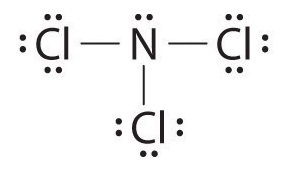
Nitrogen trichloride is an unstable oily liquid once used to bleach flour; this use is now prohibited in the United States.
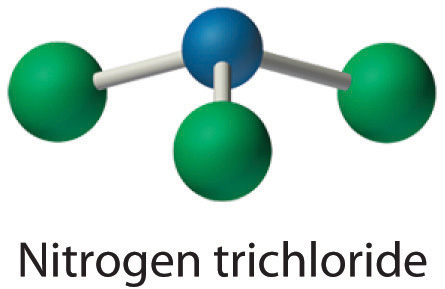
- In a diatomic molecule or ion, we do not demand to worry about a central atom. Each sulfur atom (group 16) contains 6 valence electrons, and we need to add 2 electrons for the −2 charge, giving a total of 14 valence electrons. Using 2 electrons for the S–S bond, we arrange the remaining 12 electrons as 3 lone pairs on each sulfur, giving each S atom an octet of electrons:

- Because nitrogen is less electronegative than oxygen or chlorine, it is the cardinal atom. The North atom (group xv) has 5 valence electrons, the O atom (group 16) has 6 valence electrons, and the Cl atom (group 17) has 7 valence electrons, giving a total of 18 valence electrons. Placing one bonding pair of electrons betwixt each pair of bonded atoms uses 4 electrons and gives the post-obit:

Adding three solitary pairs each to oxygen and to chlorine uses 12 more electrons, leaving two electrons to identify every bit a lonely pair on nitrogen:

Considering this Lewis structure has only 6 electrons around the fundamental nitrogen, a solitary pair of electrons on a concluding atom must exist used to form a bonding pair. We could apply a solitary pair on either O or Cl. Because we have seen many structures in which O forms a double bond but none with a double bond to Cl, it is reasonable to select a lone pair from O to give the following:

All atoms now take octet configurations. This is the Lewis electron structure of nitrosyl chloride, a highly corrosive, carmine-orange gas.
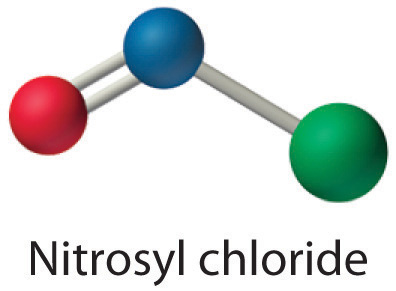
Exercise \(\PageIndex{one}\)
Write Lewis electron structures for COtwo and SCl2, a vile-smelling, unstable scarlet liquid that is used in the manufacture of rubber.
Answer
Lewis Construction of Molecules: https://youtu.be/xWiFCqA9Ur0
Using Lewis Electron Structures to Explain Stoichiometry
Lewis dot symbols provide a simple rationalization of why elements form compounds with the observed stoichiometries. In the Lewis model, the number of bonds formed by an chemical element in a neutral compound is the same equally the number of unpaired electrons it must share with other atoms to complete its octet of electrons. For the elements of Group 17 (the halogens), this number is one; for the elements of Grouping 16 (the chalcogens), it is two; for Group 15 elements, 3; and for Group 14 elements four. These requirements are illustrated by the following Lewis structures for the hydrides of the lightest members of each group:
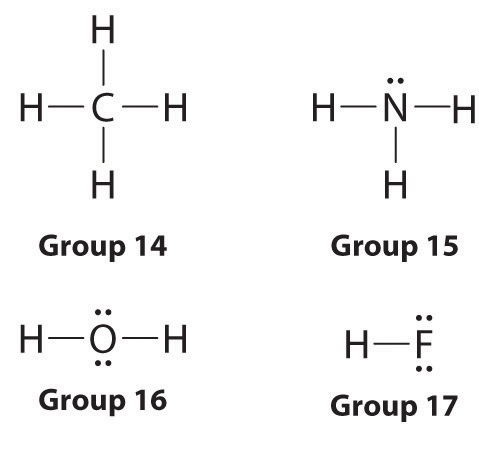
Elements may form multiple bonds to complete an octet. In ethylene, for instance, each carbon contributes two electrons to the double bond, giving each carbon an octet (two electrons/bond × four bonds = 8 electrons). Neutral structures with fewer or more bonds be, but they are unusual and violate the octet rule.
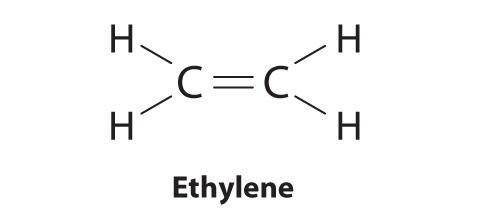
Allotropes of an element can have very different physical and chemical properties considering of different three-dimensional arrangements of the atoms; the number of bonds formed by the component atoms, notwithstanding, is always the same. As noted at the beginning of the chapter, diamond is a hard, transparent solid; graphite is a soft, blackness solid; and the fullerenes have open up cage structures. Despite these differences, the carbon atoms in all three allotropes grade four bonds, in accordance with the octet rule.
Notation
Lewis structures explain why the elements of groups fourteen–17 form neutral compounds with four, three, two, and one bonded atom(s), respectively.
Elemental phosphorus also exists in three forms: white phosphorus, a toxic, waxy substance that initially glows and so spontaneously ignites on contact with air; carmine phosphorus, an baggy substance that is used commercially in safety matches, fireworks, and fume bombs; and black phosphorus, an unreactive crystalline solid with a texture like to graphite (Figure \(\PageIndex{3}\)). Nonetheless, the phosphorus atoms in all 3 forms obey the octet rule and class three bonds per phosphorus atom.

Effigy \(\PageIndex{3}\): The Three Allotropes of Phosphorus: White, Cherry-red, and Blackness. ll three forms contain simply phosphorus atoms, only they differ in the arrangement and connectivity of their atoms. White phosphorus contains Pfour tetrahedra, cherry-red phosphorus is a network of linked P8 and P9 units, and blackness phosphorus forms sheets of six-membered rings. Every bit a issue, their physical and chemical backdrop differ dramatically.
Formal Charges
It is sometimes possible to write more than than one Lewis structure for a substance that does not violate the octet dominion, as we saw for CHiiO, merely not every Lewis construction may exist as reasonable. In these situations, we can cull the almost stable Lewis structure by considering the formal charge on the atoms, which is the difference between the number of valence electrons in the free atom and the number assigned to it in the Lewis electron construction. The formal charge is a mode of computing the charge distribution within a Lewis structure; the sum of the formal charges on the atoms within a molecule or an ion must equal the overall charge on the molecule or ion. A formal charge does not represent a true charge on an atom in a covalent bond just is merely used to predict the about likely construction when a chemical compound has more than 1 valid Lewis structure.
To calculate formal charges, nosotros assign electrons in the molecule to individual atoms co-ordinate to these rules:
- Nonbonding electrons are assigned to the atom on which they are located.
- Bonding electrons are divided as between the bonded atoms.
For each atom, we so compute a formal charge:
\( \begin{matrix}
formal\; charge= & valence\; east^{-}- & \left ( non-bonding\; e^{-}+\frac{bonding\;e^{-}}{2} \right )\\
& ^{\left ( free\; atom \correct )} & ^{\left ( atom\; in\; Lewis\; construction \correct )}
\end{matrix} \label{viii.v.1} \) (cantlet in Lewis structure)
To illustrate this method, permit'southward calculate the formal charge on the atoms in ammonia (NHiii) whose Lewis electron structure is as follows:

A neutral nitrogen atom has v valence electrons (it is in group fifteen). From its Lewis electron construction, the nitrogen cantlet in ammonia has ane alone pair and shares three bonding pairs with hydrogen atoms, so nitrogen itself is assigned a total of v electrons [ii nonbonding eastward− + (6 bonding e−/two)]. Substituting into Equation 8.5.two, nosotros obtain
\[ formal\; charge\left ( Northward \right )=5\; valence\; e^{-}-\left ( 2\; non-bonding\; east^{-} +\frac{6\; bonding\; due east^{-}}{2} \right )=0 \label{8.v.2}\]
A neutral hydrogen atom has one valence electron. Each hydrogen atom in the molecule shares ane pair of bonding electrons and is therefore assigned one electron [0 nonbonding east− + (2 bonding e−/ii)]. Using Equation 8.5.ii to calculate the formal accuse on hydrogen, we obtain
\[ formal\; accuse\left ( H \correct )=ane\; valence\; e^{-}-\left ( 0\; non-bonding\; e^{-} +\frac{2\; bonding\; due east^{-}}{2} \right )=0 \label{eight.5.3}\]
The hydrogen atoms in ammonia accept the same number of electrons every bit neutral hydrogen atoms, and then their formal charge is likewise null. Adding together the formal charges should give u.s. the overall charge on the molecule or ion. In this example, the nitrogen and each hydrogen has a formal charge of zip. When summed the overall charge is zippo, which is consistent with the overall charge on the NH3 molecule.
Note
An atom, molecule, or ion has a formal charge of zero if it has the number of bonds that is typical for that species.
Typically, the structure with the about charges on the atoms closest to nil is the more than stable Lewis structure. In cases where there are positive or negative formal charges on various atoms, stable structures mostly take negative formal charges on the more electronegative atoms and positive formal charges on the less electronegative atoms. The next case further demonstrates how to calculate formal charges.
Lewis Structure of Charged Molecules: https://youtu.be/pTkziPtvMYU
Case \(\PageIndex{ii}\)
Calculate the formal charges on each atom in the NH4 + ion.
Given: chemical species
Asked for: formal charges
Strategy:
Place the number of valence electrons in each atom in the NH4 + ion. Utilize the Lewis electron structure of NH4 + to identify the number of bonding and nonbonding electrons associated with each atom and so utilise Equation 8.v.2 to calculate the formal charge on each atom.
Solution:
The Lewis electron structure for the NH4 + ion is equally follows:

The nitrogen atom shares four bonding pairs of electrons, and a neutral nitrogen atom has five valence electrons. Using Equation 8.5.1, the formal accuse on the nitrogen atom is therefore
\[ formal\; charge\left ( N \right )=five-\left ( 0+\frac{8}{2} \right )=0 \]
Each hydrogen atom in has ane bonding pair. The formal charge on each hydrogen atom is therefore
\[ formal\; charge\left ( H \right )=1-\left ( 0+\frac{ii}{2} \right )=0 \]
The formal charges on the atoms in the NHiv + ion are thus

Adding together the formal charges on the atoms should requite us the full charge on the molecule or ion. In this case, the sum of the formal charges is 0 + ane + 0 + 0 + 0 = +1.
Exercise \(\PageIndex{2}\)
Write the formal charges on all atoms in BHfour −.
Answer

If an atom in a molecule or ion has the number of bonds that is typical for that atom (e.g., iv bonds for carbon), its formal charge is nix.
Using Formal Charges to Distinguish Viable Lewis Structures
As an example of how formal charges tin can be used to determine the near stable Lewis structure for a substance, we can compare ii possible structures for CO2. Both structures conform to the rules for Lewis electron structures.
COii
- C is less electronegative than O, so it is the central atom.
- C has 4 valence electrons and each O has half-dozen valence electrons, for a full of 16 valence electrons.
- Placing one electron pair betwixt the C and each O gives O–C–O, with 12 electrons left over.
- Dividing the remaining electrons between the O atoms gives iii lone pairs on each atom:
![]()
This structure has an octet of electrons around each O atom but only 4 electrons effectually the C atom.
- No electrons are left for the central atom.
- To requite the carbon cantlet an octet of electrons, we tin can convert two of the lone pairs on the oxygen atoms to bonding electron pairs. In that location are, even so, ii ways to exercise this. We can either accept 1 electron pair from each oxygen to form a symmetrical structure or take both electron pairs from a unmarried oxygen cantlet to give an asymmetrical structure:

Both Lewis electron structures give all three atoms an octet. How do nosotros decide between these two possibilities? The formal charges for the two Lewis electron structures of COtwo are every bit follows:

Both Lewis structures have a net formal charge of zero, only the structure on the right has a +1 charge on the more than electronegative cantlet (O). Thus the symmetrical Lewis structure on the left is predicted to exist more than stable, and it is, in fact, the structure observed experimentally. Remember, though, that formal charges practice not represent the actual charges on atoms in a molecule or ion. They are used just every bit a bookkeeping method for predicting the nigh stable Lewis structure for a compound.
Annotation
The Lewis structure with the ready of formal charges closest to aught is usually the most stable.
Example \(\PageIndex{3}\): The Thiocyanate Ion
The thiocyanate ion (SCN−), which is used in printing and as a corrosion inhibitor against acidic gases, has at to the lowest degree two possible Lewis electron structures. Draw two possible structures, assign formal charges on all atoms in both, and decide which is the preferred arrangement of electrons.
Given: chemical species
Asked for: Lewis electron structures, formal charges, and preferred organisation
Strategy:
- Use the pace-by-step process to write two plausible Lewis electron structures for SCN−.
- Summate the formal charge on each atom using Equation 8.5.1.
- Predict which construction is preferred based on the formal charge on each atom and its electronegativity relative to the other atoms present.
Solution:
A Possible Lewis structures for the SCN− ion are as follows:

B We must calculate the formal charges on each atom to identify the more stable construction. If nosotros begin with carbon, nosotros notice that the carbon atom in each of these structures shares four bonding pairs, the number of bonds typical for carbon, so information technology has a formal charge of zero. Continuing with sulfur, we observe that in (a) the sulfur atom shares 1 bonding pair and has three lone pairs and has a full of half-dozen valence electrons. The formal charge on the sulfur cantlet is therefore \( 6-\left ( half dozen+\frac{two}{2} \right )=-i.v-\left ( 4+\frac{4}{ii} \right )=-one \) In (c), nitrogen has a formal charge of −2.
C Which structure is preferred? Structure (b) is preferred because the negative charge is on the more electronegative atom (N), and it has lower formal charges on each cantlet as compared to structure (c): 0, −1 versus +one, −2.
Exercise \(\PageIndex{3}\): The Fulminate Ion
Salts containing the animadvert ion (CNO−) are used in explosive detonators. Describe 3 Lewis electron structures for CNO− and employ formal charges to predict which is more stable. (Note: N is the primal atom.)
Respond

The second structure is predicted to be more stable.
Summary
- Lewis dot symbols provide a simple rationalization of why elements form compounds with the observed stoichiometries.
A plot of the overall energy of a covalent bond as a office of internuclear distance is identical to a plot of an ionic pair because both result from attractive and repulsive forces between charged entities. In Lewis electron structures, we encounter bonding pairs, which are shared by two atoms, and lone pairs, which are not shared between atoms. If both electrons in a covalent bond come from the aforementioned atom, the bail is called a coordinate covalent bail. Lewis structures are an attempt to rationalize why certain stoichiometries are usually observed for the elements of particular families. Neutral compounds of group 14 elements typically incorporate four bonds around each atom (a double bail counts as ii, a triple bond every bit three), whereas neutral compounds of group 15 elements typically contain three bonds. In cases where it is possible to write more one Lewis electron structure with octets around all the nonhydrogen atoms of a compound, the formal charge on each cantlet in alternative structures must be considered to decide which of the valid structures can be excluded and which is the nearly reasonable. The formal accuse is the difference between the number of valence electrons of the complimentary atom and the number of electrons assigned to information technology in the compound, where bonding electrons are divided equally betwixt the bonded atoms. The Lewis structure with the lowest formal charges on the atoms is nigh always the virtually stable 1.
Source: https://chem.libretexts.org/Bookshelves/General_Chemistry/Map:_General_Chemistry_%28Petrucci_et_al.%29/10:_Chemical_Bonding_I:_Basic_Concepts/10.4:_Writing_Lewis_Structures

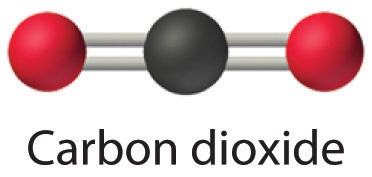
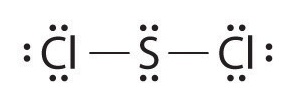
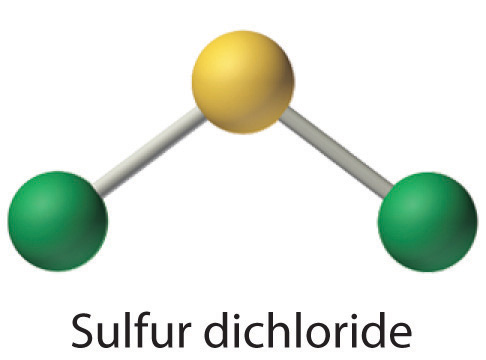
0 Response to "How Do You Know Which Lewis Structure Achieves the Best Formal Charge Arrangement"
Post a Comment